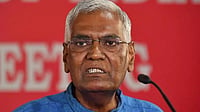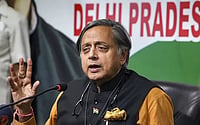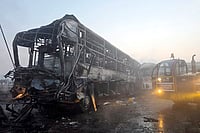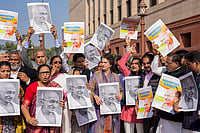With these impeccable credentials, Wajahat Habibullah’s book seeks to cover a wide range of issues including the historical springs of the conflict, its socio-religious dimensions, Centre-state machinations, civilian and military governance, India-Pakistan dialogues, international nuances and development options. An ambitious task indeed and more so when it is confined within a brief 172 pages. Habibullah has lived up to the challenge in substantial measure, but such a wide sweep contains its own pitfalls—his analysis of various contentious concepts leaves many critical questions unanswered.
Habibullah writes, "Islam has been pivotal to the evolving politics of Kashmir, but more as a symbol of a people fighting for identity rather than in its religious ramifications" and despite variations in practice it is the Sufi tradition that predominates. This has often been projected as the basis of a "syncretic" culture that is fundamentally secular in character and which saw its political manifestation when the freedom movement split in 1941 between Sheikh Abdullah’s National Conference and the pro-Jinnah Muslim Conference.
However, since the Hindu minority continued to dominate the majority Muslim peasantry through feudal land relations and control of public office, the radical land reforms of the 1950s were not only a measure to correct centuries of inequity but also an assertion of Muslim identity. Similarly, the tilt in hiring practices was a conscious attempt to give Muslim youth a renewed sense of belonging and hope and open up economic opportunities. This clearly had a long-term impact on the communal equation and generated new tensions over the years that eventually culminated in the tragic exodus of Kashmiri Pandits in 1990. Thus, it is difficult to extricate the quest for identity from its religious connotations without papering over some harsh realities.
For similar reasons, the concept of ‘Kashmiriat’, often employed to describe the inclusive nature of Kashmiri tradition, has come under severe scrutiny over the years. According to Habibullah, the term was coined by Pandit intellectuals, like the radical Prem Nath Bazaz, to project a common cultural heritage but was always looked upon with scepticism by most people in both communities—"the concept eventually succumbed to the pressures of radicalism and political contradiction." Yet it continues to surface every now and then as a rationalisation to buttress ideological positions by disparate political elements including ‘mainstream’ parties such as the Congress and National Conference as well as separatists like the Jammu and Kashmir Liberation Front. A hornet’s nest was stirred in Srinagar following the recent visit of the President of India where she spoke of "Kashmir being an integral part of the cultural mosaic of India". Several eminent Muslim intellectuals have reacted strongly by asserting that culturally Kashmir is closer to Central Asia than South Asia and that "the projection of its individuality through Kashmiriat is nothing but a histrionic gesture; a sinister move to legitimise the position of disputed Kashmir". Clearly people’s own perception of identity is inextricably linked to religion which must be given due consideration in evolving any acceptable resolution.
Whilst Habibullah very insightfully identifies the convoluted layers of complexity in the Kashmir situation, he argues that it should not be seen as "intractable" and offers a tentative outline for its resolution through a reduction in violence, democratic decentralisation and above all by the reconstruction of trust all around. This process can only be achieved through a sincere tripartite dialogue between India, Pakistan and a representative Kashmiri leadership. However, the latter issue is left in limbo. For most part, the reference is to the politics of the Valley even though the prescription is meant for all of Jammu and Kashmir including that part held by Pakistan. Only a truly representative leadership that can speak confidently for people from the three main regions of this diverse state can carry credibility. Till such a leadership emerges, in practice, the situation would continue to remain intractable. Nevertheless, Habibullah’s perceptive and sensitive analysis would surely contribute to finding an honourable way forward.


























